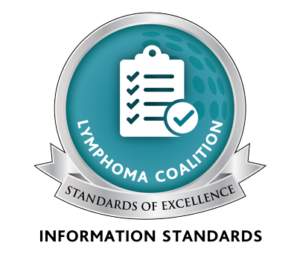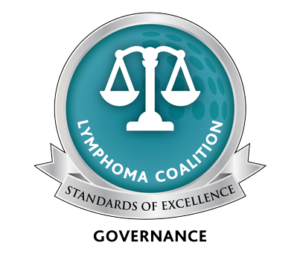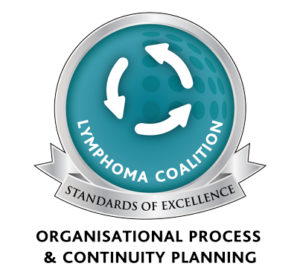Smoking
Not only is smoking related to more than 85% of lung cancer cases in Canada, it can also increase the risk of developing cancers of the larynx, mouth and throat, nasal cavity, esophagus, stomach, colon and rectum, pancreas, liver, bladder, cervix, some types of ovarian cancer and acute myelogenous leukemia. It is a well-known fact that smoking is a strong addiction and it is very difficult to quit. However, you will help yourself and those around you, who may suffer from the detrimental health effects of second-hand smoke, lead a healthier lifestyle if you start the quitting process as soon as you can. For help on quitting go to: www.smokershelpline.ca.
References:
Canadian Cancer Society. Smoking and Cancer
Ultraviolet Radiation (UVR) Exposure
The most common sources of UVR exposure come from the sun (long exposure through recreation or outdoor work), indoor tanning beds, occupational machines (eg, welding and metal work), and phototherapy treatments (eg, psoralen UVA therapy to treat psoriasis). UVR exposure has been linked to an increased risk of various skin-related cancers. The best way to reduce UVR exposure is to avoid tanning equipment, harmful occupational machines, and overexposure to the sun at times of the day when the UVR is most harmful. Here are some practical strategies of effective sun protection:
- Check the weather report daily for the UV index – if UV index is greater than 3, avoid outdoor activities during peak UVR hours between 11:00 AM and 4:00 PM
- Protect yourself by wearing broad brimmed hats, sunglasses, long-sleeved shirts, and long pants if you will be outdoors form more than 15 minutes during peak UVR hours
- Use sunscreen with a sun protection factor (SPF) of greater than 15 for exposed skin; use sunscreen with an SPF of 30 if you plan on being outdoors for most of the day (eg, working outdoors)
If you are fair skinned and tend to burn easily, be extra vigilant in protecting your skin. The same principle applies for infants and young children.
References:
Canadian Cancer Society. Sun and UV
Canadian Cancer Statistics 2014. Special topic: Skin cancers
Pesticides
Pesticides are chemicals that can be categorized as non-cosmetic (required for public health and safety) and cosmetic (not required for public health and safety). They include insecticides (used to control insects), herbicides (used to control weeds), fungicides (used to control fungus), rodenticides (used to control rodents), fumigants (gas or vapour used to control insects), and microbials (used to control algae, slugs, and insect eggs). We can be exposed to pesticides through absorption into our skin, inhalation, or ingestion of contaminated water or produce. Exposures can occur at home (eg, pesticides for lawns and insect repellents), in your community (eg, contaminated water or soil from nearby farms or pesticides used in parks), through your diet (eg, contaminated fruits or vegetables), or at your job (eg, pesticides used in farming or recreation industry).
Although there is still little definitive evidence showing a link between pesticides and cancer, there is increasing evidence to show a connection with cancers such as non-Hodgkin lymphoma (especially among farmers), multiple myeloma, and cancers of the lung, kidney, and prostate. There may also be a possible connection between pesticides and childhood cancers such as leukemia, brain tumours, and non-Hodgkin lymphoma.
To reduce your exposure at home and in your community, stay indoors (for at least 48 hours) with your windows and doors closed if a nearby farm and/or golf course are spraying pesticides. Find alternative ways to care for your lawn (eg, digging out weeds). To reduce your exposure of residual pesticides on fruits and vegetables, be sure to thoroughly wash all your produce with running water and/or with a scrubbing brush. You may also choose to peel the outer skin or outer leaves of various fruits and vegetables. If you are exposed to pesticides at work, be sure to thoroughly protect yourself and those around you by: following provincial health and safety requirements (eg, proper storage and disposal of pesticides), reducing the amount of pesticides used, wearing protective clothing (eg, gloves and masks), changing out of work clothing before leaving work, thoroughly washing your hands immediately after pesticide use, avoiding food or drink consumption in areas where pesticides are used, reducing environmental drift, avoiding exposure to children or pets, and posting warning signs in and around the community.
References:
Canadian Cancer Society, Pesticides
Food Storage and Cooking Surfaces
Bisphenol A (BPA) is a chemical that is found in polycarbonate plastics (hard clear plastics with a recycling code 7, usually used in reusable water bottles and sippy cups for children), resins that line food cans, and dental materials (eg, sealants or composite fillings). It has been a topic of concern in recent days as reports have suggested that BPA may leach and contaminate the food or water that the plastics or food cans are exposed to. The only studies to date have been done on laboratory animals and results suggest that BPA exposure at a young age can affect hormonal development resulting in effects on sperm production, fertility, changes in breast tissue development, and changes in the prostate gland. Presently, there is no evidence to suggest that BPA increases your risk of cancer or whether it can affect other areas of your health. Health Canada is currently most concerned with exposure in infants and children. You can try to reduce your exposure by choosing to use stainless steel, glass, or polypropylene plastic (recycle code 5) containers over polycarbonate plastics (look for the BPA-free label on products) and eating fresh or frozen foods over canned foods. You can also ask your dentist about alternative dental materials.
Non-stick cookware may contain tetrafluoroethylene (TFE, material used to create a non-stick coating) and perfluorooctanoic acid (PFOA, material used during the production process). Studies have shown that heating non-stick cookware at temperatures of 300 degrees Celsius (572 degrees Fahrenheit) may create fumes containing TFE that may increase cancer risk. Also, during the production of non-stick cookware, PFOA may be released into the environment and may exist on the cookware at very low levels. Some studies have shown that long periods of PFOA exposure over time may be linked to prostate cancer in humans. Currently, there is no evidence to suggest that eating the non-stick coating that may peel off into your food is harmful to your health. To reduce your exposure, do not use non-stick cookware at temperatures greater than 350 degrees Celsius (650 degrees Fahrenheit), or for broiling or high temperature cooking or baking.
References:
Canadian Cancer Society. Bisphenol A (BPA)
Canadian Cancer Society. Non-stick cookware
Radiofrequency Fields
Cell phones, cell phone towers, radio, wireless internet, satellites, radars, microwave ovens, all use energy to function or transmit and receive information. Since the strength of the radiofrequency energy is the strongest the closer you are to the source, cell phones represent the greatest amount of exposure as they are often held against your body. A small number of studies show a potential link between cell phone use and cancer but the evidence is still lacking and inconclusive. To be extra cautious, you may wish to limit your exposure to your cell phone by turning it off at night, using a wired or wireless headset (to avoid holding your phone to your ear), and reducing your on-screen time.
References:
Canadian Cancer Society. Cell phones and radiofrequency fields
Fish Exposure to Environmental Pollutants
Many types of larger, older, predatory ocean fish such as swordfish, tuna, and shark have been found to contain high levels of mercury, dioxins, and other environmental pollutants. In addition, farmed fish also contain similar high levels of pollutants. However, fish is a rich source of omega-3 fatty acids which has been shown to be beneficial to overall health. It is recommended to vary the type of fish that you eat to reduce the amount of exposure to these pollutants.
References:
Kushi LH, Doyle C, McCullough M, et al. American Cancer Society Guidelines on Nutrition and Physical Activity for Cancer Prevention
Ca Cancer J Clin. 2012;62:30–67
Household Cleaners
Household cleaning supplies have been linked to health concerns such as chronic respiratory problems, allergic reactions, headaches, and asthma. Volatile organic compounds, ammonia, and bleach are usually the culprits. However, there is very little evidence to show that these chemicals can cause cancer. If you wish to be cautious, you can use safer alternatives such as vinegar and water for cleaning glass, or baking soda for scrubbing.
References:
American Lung Association. Cleaning Supplies and Household Chemicals





